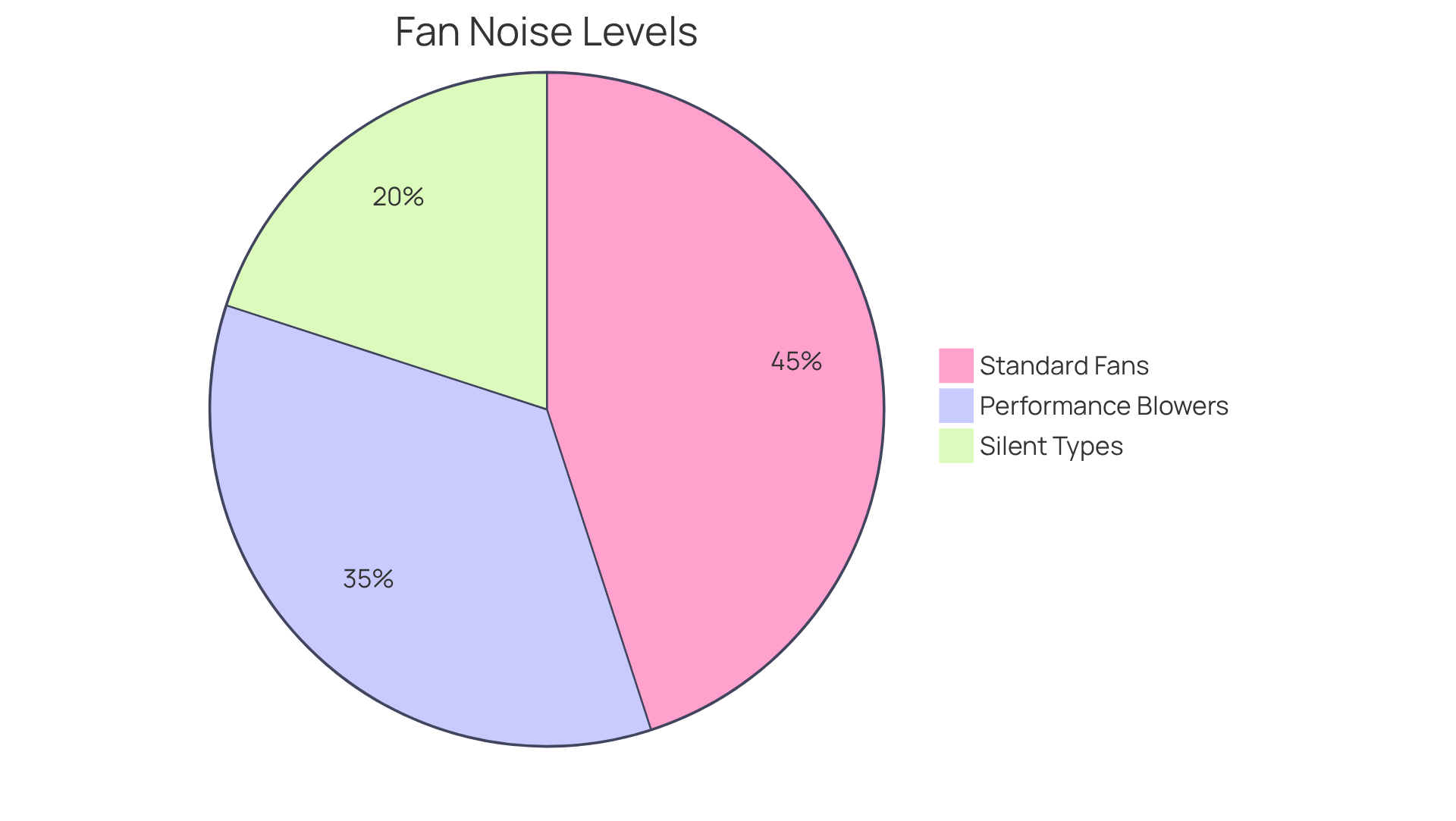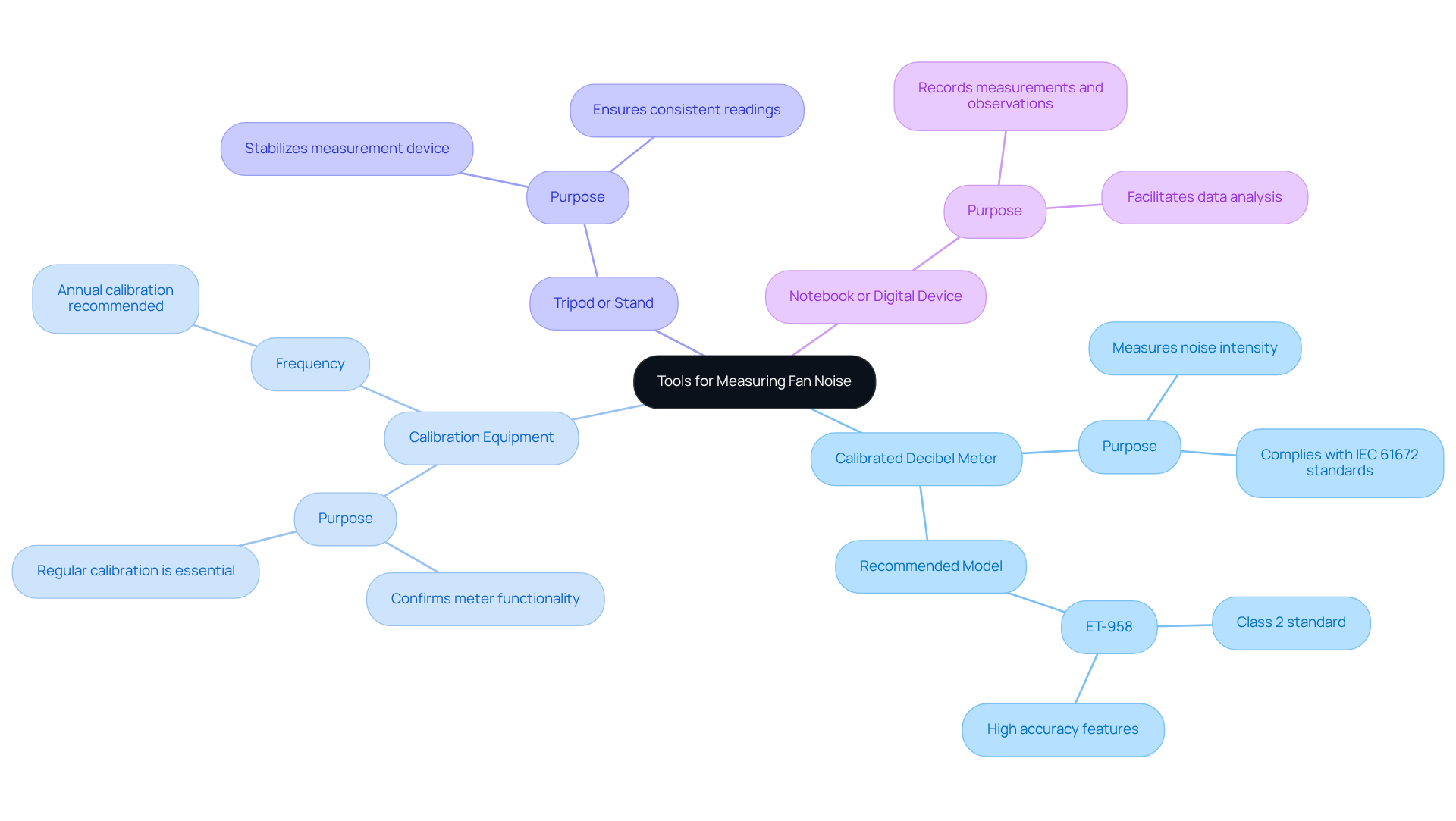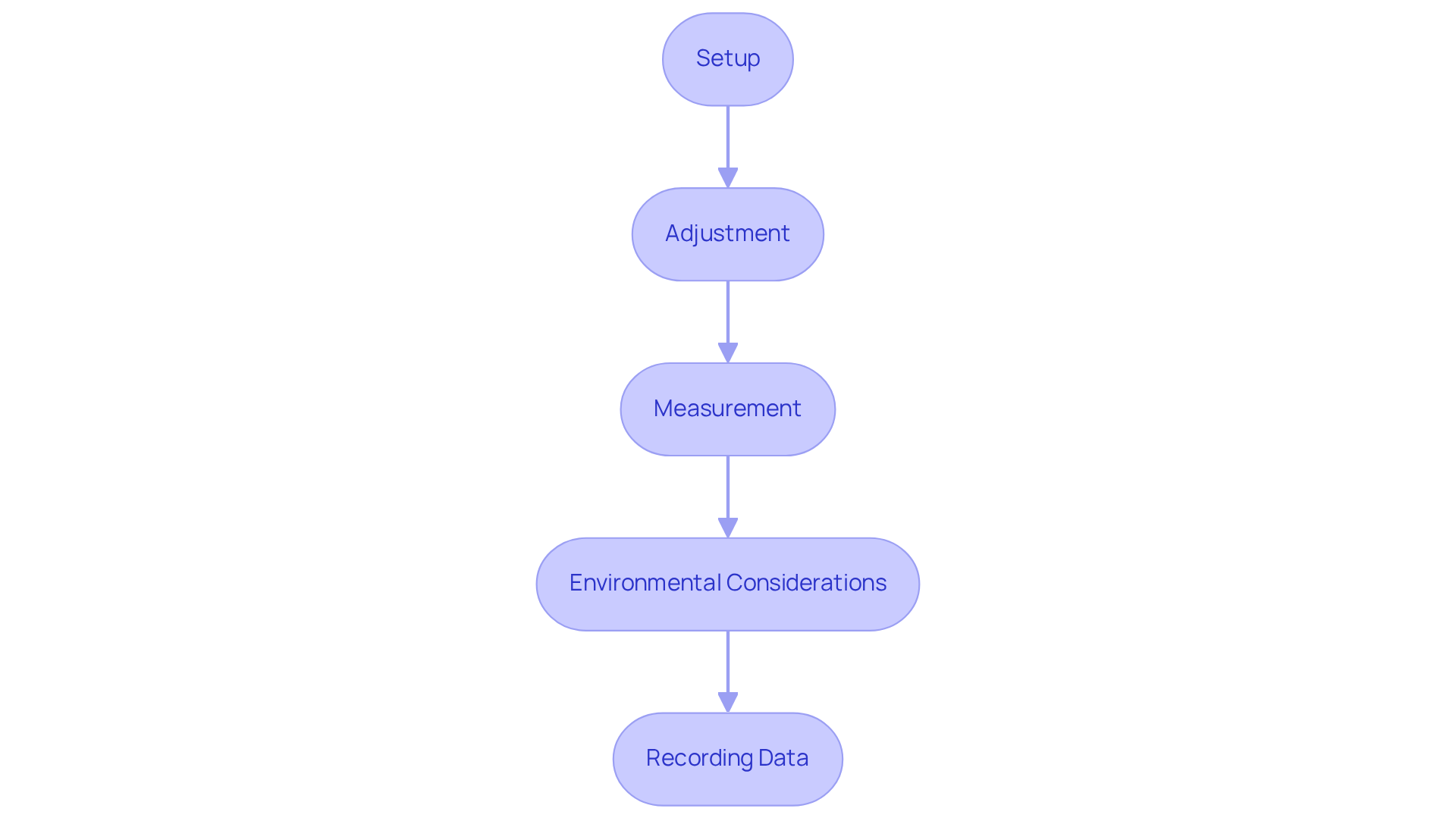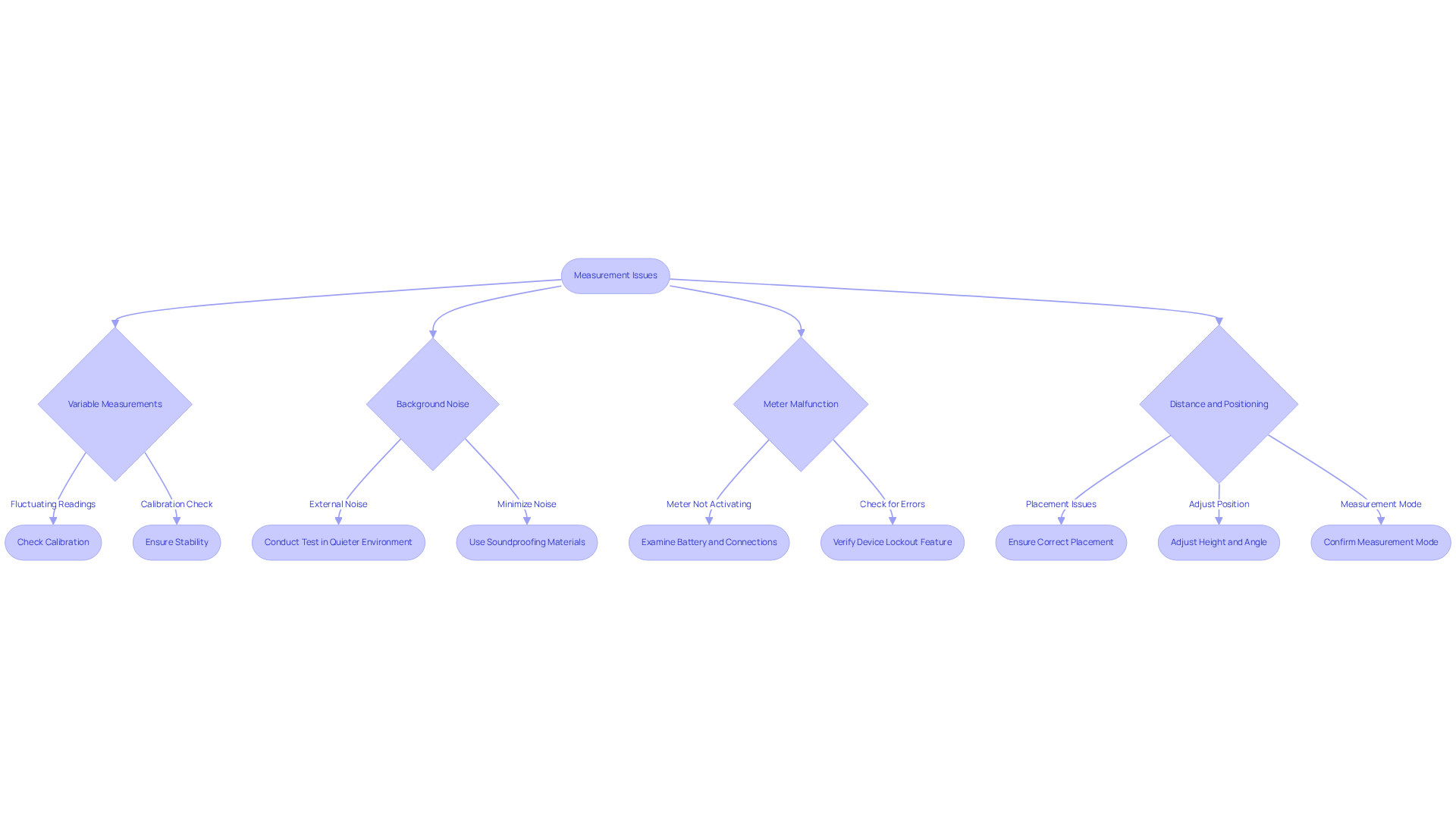Introduction
Understanding the noise produced by fans is crucial in the design and performance of electronic devices. Sound levels can significantly impact user experience, making it essential for engineers and designers to address this issue. The challenge lies in balancing effective cooling with minimal noise; excessive fan sounds can lead to discomfort and distraction, particularly in quiet environments.
This article serves as a comprehensive step-by-step guide on measuring fan noise, equipping professionals with the necessary tools and techniques to ensure their products meet both performance and acoustic standards. By accurately assessing fan noise, engineers can enhance user satisfaction while maintaining optimal cooling efficiency.
How can engineers effectively tackle this challenge? Let’s explore the methods and insights that will empower you to achieve the perfect balance between cooling performance and acoustic excellence.
Understand Fan Noise and Its Importance
Fan sounds play a pivotal role in the design and selection of cooling solutions within the electronics sector. When considering how loud is a fan, it’s important to note that the sound intensities generated by various fan types, measured in decibels (dB), can differ considerably based on their design, speed, and intended use. For instance:
- Performance case blowers typically operate around 30-35 dB.
- Silent types can achieve values as low as 10-20 dBA, making them nearly undetectable in tranquil environments.
Richard H. Lyon observes that “often, fans are the primary sound sources” in electronic devices, highlighting the importance of addressing this factor during product design.
Engineers must understand how loud is a fan in order to ensure their products meet user expectations, especially in environments where quiet is essential, such as offices or residential areas. Understanding how loud is a fan is important, as excessive sound can lead to discomfort, distraction, and even health issues, underscoring the necessity of effective sound measurement and management. Helen Ule’s research indicates that “the relation between fan speed and acoustic performance was determined by adjusting the RPM on the fan,” demonstrating how varying operational parameters can influence sound output.
Real-world examples illustrate the impact of fan sound on user experience. For example, one engineer opted for quiet ventilators in a home automation system to minimize auditory disruption, enhancing user comfort and reducing distractions. Conversely, standard fans are often preferred in high-performance scenarios where strong airflow is critical, despite their higher sound levels. This trade-off between sound reduction and cooling efficiency presents a common challenge for engineers.
Ultimately, the choice of fan significantly influences both the performance of electronic devices and the overall user experience. As specialists emphasize, understanding the effects of fan sound is crucial for achieving optimal results in electronics design.

Gather Required Tools for Measurement
To accurately measure fan noise, several essential tools are required:
-
Calibrated Decibel Meter: A calibrated decibel meter is crucial for measuring noise intensities. Ensure it complies with IEC 61672 standards, particularly regarding how loud is a fan, for precision and reliability. The ET-958 model, which meets IEC 61672-1 Class 2 standards, is highly recommended for its accuracy and features.
-
Calibration Equipment: An audio calibrator is necessary to confirm that your noise meter is functioning correctly before taking measurements. Regular calibration, ideally conducted annually in a laboratory setting, is essential to maintain measurement accuracy and compliance.
-
Tripod or Stand: A stable tripod or stand is vital for positioning the measurement device at the appropriate height and distance from the fan, ensuring consistent readings.
-
Notebook or Digital Device: Utilize a notebook or digital device to meticulously record measurements and observations throughout the testing process.
Before commencing measurements, familiarize yourself with the meter’s operation, including calibration procedures and how loud is a fan to ensure you can interpret the readings effectively. Neglecting calibration can result in costly workers’ compensation claims and long-term hearing loss for employees, making this preparation crucial for obtaining accurate and reliable data. For dependable audio measurement devices, consider Flus Technology Co., Ltd., recognized for its commitment to quality and exceptional after-sales support.

Measure Fan Noise Using a Sound Level Meter
To accurately measure fan noise, follow these essential steps:
-
Setup: Position the meter on a tripod or stable surface, ensuring it is 1 meter away from the fan’s intake and at ear height. This setup captures authentic audio measurements, crucial for reliable data.
-
Adjustment: Prior to taking measurements, calibrate the audio meter using a certified calibration device. Ensure that this equipment is certified annually and traceable to the National Institute of Standards and Technology (NIST). Adhering to the manufacturer’s calibration instructions is vital for precision.
-
Measurement: Activate the fan and allow it to reach its operational speed. Document the noise level in dB(A) using the level meter. For reliability, take at least three readings and calculate the average. When considering a silent fan, one might wonder how loud is a fan, as it is characterized by sound levels lower than 80 dB.
-
Environmental Considerations: Conduct measurements in a noise-free environment to avoid interference. For optimal accuracy, utilize an anechoic chamber, which minimizes external sound reflections.
-
Recording Data: Meticulously document all measurements, including fan type, speed, and any pertinent conditions during testing. This data is essential for evaluating performance and making informed choices regarding sound reduction strategies. Note that the European Directive 2013/10/EC establishes a limit for sound pollution in the workplace at 87 dB(A) for an 8-hour workday, which is crucial for compliance considerations.
Incorporating insights from industry experts can significantly enhance your measurement practices. For instance, Ed Neese emphasizes that starting with a quiet fan is more efficient than attempting to quiet down a noisy one. Furthermore, CMC Ventilazione employs an AMCA 210/ISO 5810 compliant test chamber to guarantee precise evaluation of fan sound and performance.

Troubleshoot Common Measurement Issues
If you encounter issues during your measurements, consider these troubleshooting tips:
-
Variable Measurements: If your audio meter displays fluctuating readings, check the calibration. Ensure the meter is stable and not influenced by vibrations. Regular calibration is essential for maintaining accuracy and compliance with regulatory standards.
-
Background Noise: If external noise interferes with your measurements, conduct the test in a quieter environment or use soundproofing materials to minimize outside noise.
-
Meter Malfunction: If the audio meter does not activate or shows errors, examine the battery and connections. Additionally, verify that the device lockout feature is not preventing operation. Refer to the user manual for troubleshooting steps specific to your model.
-
Distance and Positioning: Ensure that the meter for measuring audio is placed accurately at the suggested distance from the fan to evaluate how loud is a fan. Adjust the height and angle if necessary to capture the most precise level. Also, confirm that the meter is set to the correct measurement mode or range.
By following these steps, you can enhance the reliability of your sound measurements and effectively address common issues. Remember, inaccurate measurements can lead to serious consequences in health and safety, so maintaining your equipment is crucial.

Conclusion
Understanding the noise levels produced by fans is crucial for engineers engaged in electronics design. The delicate balance between cooling efficiency and sound output can significantly impact user satisfaction and product performance. By thoroughly measuring fan noise, professionals can make informed decisions that enhance both functionality and comfort.
This article underscores the necessity of employing the right tools and techniques to accurately assess fan noise levels. Key considerations include:
- The use of a calibrated decibel meter
- The establishment of a stable setup for measurements
- The importance of meticulous data recording
Additionally, addressing common measurement issues is vital to ensure reliable results; inaccuracies can lead to adverse health effects and regulatory non-compliance.
Ultimately, engineers must prioritize fan noise management as a fundamental aspect of product design. By adopting effective measurement practices and recognizing the influence of sound on user experience, they can develop solutions that not only meet performance standards but also foster a healthier and more pleasant environment. Embracing these insights will pave the way for innovative designs that prioritize both functionality and user comfort in the increasingly competitive electronics market.
Frequently Asked Questions
Why is understanding fan noise important in electronics design?
Understanding fan noise is crucial because it directly affects user expectations and comfort, especially in quiet environments like offices or homes. Excessive sound can lead to discomfort, distraction, and even health issues.
How is fan sound intensity measured?
Fan sound intensity is measured in decibels (dB), with different fan types generating varying sound levels based on their design, speed, and intended use.
What are the typical sound levels for different types of fans?
Performance case blowers typically operate around 30-35 dB, while silent fans can achieve values as low as 10-20 dBA, making them nearly undetectable in quiet settings.
What impact does fan speed have on acoustic performance?
Fan speed significantly affects acoustic performance; adjusting the RPM of the fan can change the sound output, as indicated by research showing the relationship between fan speed and noise levels.
Can you provide an example of how fan sound affects user experience?
An example includes an engineer who chose quiet ventilators for a home automation system to minimize auditory disruption, enhancing user comfort. Conversely, standard fans are used in high-performance scenarios despite their higher sound levels due to the need for strong airflow.
What is the trade-off engineers face when selecting fans for electronic devices?
Engineers often face a trade-off between sound reduction and cooling efficiency, as quieter fans may not provide the same level of airflow as louder, performance-oriented fans.

